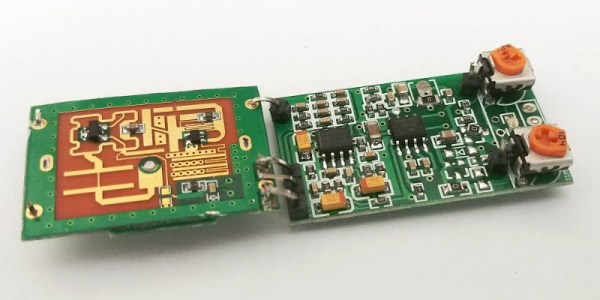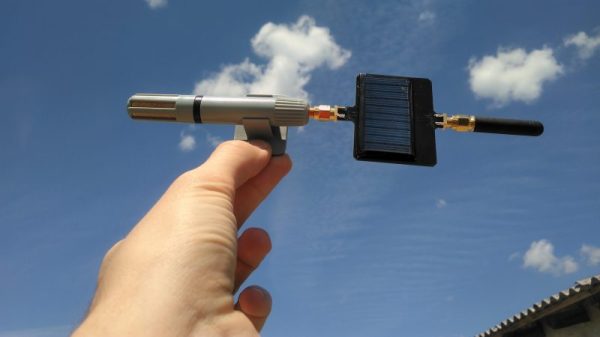If there’s a chemical with a cooler name than “fuming nitric acid,” we can’t think of it. Nearly pure nitric acid is useful stuff, especially if you’re in the business of making rocket fuels and explosives. But the low-end nitric acid commonly available tops out at about 68% pure, so if you want the good stuff, you’ll have to synthesize fuming nitric acid yourself. (And by “good stuff”, we mean be very careful with the resulting product.)
Fuming nitric acid comes in two colors – red fuming nitric acid (RFNA), which is about 90% pure and has some dissolved nitrogen oxides, giving it its reddish-brown color. White fuming nitric acid (WFNA) is the good stuff — more than 99% pure. Either one is rough stuff to work with — you don’t want to wear latex or nitrile gloves while using it. It’s not clear what [BarsMonster] needs the WFNA for, although he does mention etching some ICs. The synthesis is pretty straightforward, if a bit dangerous. An excess of sulfuric acid is added to potassium nitrate, and more or less pure nitric acid is distilled away from the resulting potassium sulfate. Careful temperature control is important, and [BarsMonster] seems to have gotten a good yield despite running out of ice.
We don’t feature too many straight chemistry hacks around here, but this one seemed gnarly enough to be interesting. We did have a Hackaday Prize entry a while back on improvements to the Haber process for producing ammonia, which curiously is the feedstock for commercial nitric acid production processes.






















